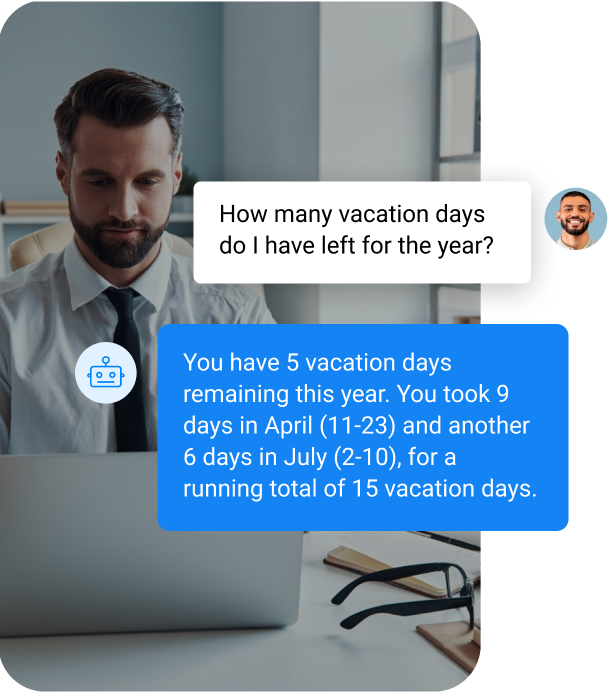Why is enterprise data crucial for GenAI apps?
LLMs don’t know your business
LLMs provide generic responses – they don’t know your customers, services, employees, and suppliers.
Most of the answers lie in your app data
The data in your business systems, like CRM, ERP, and Billing, is key to answering enterprise GenAI questions.
LLMs can generate false information
Without access to your business data, LLMs may hallucinate and damage your reputation and customer trust.

Prepare your enterprise data for RAG
Our patented Micro-Database technology is a paradigm shift in readying your data for GenAI. It's a new way of organizing enterprise data for retrieval augmented generation (RAG), essentially doing for multi-source application data what chunking, embedding, and vector DBs do for document-based data.
In customer service use cases, for example, the data for each customer is dynamically organized into its own Micro-Database, which is micro-sized, isolated, and complete with all relevant data about the customer.
Build GenAI agents, grounded by AI-ready data
- 01 No-code agent builder
- 02 Chain-of-thought orchestration
- 03 Text-to-SQL automation
- 04 Real-time data retrieval
- 05 100s of prebuilt functions
01No-code agent builder
Build your AI data agents in minutes using our no-code Studio, which includes a built-in testing and debug tool.

02Chain-of-thought orchestration
Orchestrate chain-of-thought prompting and LLM reflection to maximize LLM response accuracy.

03Text-to-SQL automation
Dynamically transform any user prompt into SQL queries that retrieve the needed enterprise data for LLM augmentation.

04Real-time data retrieval
Retrieve fresh and compliant data from the Micro-Database, at conversational latency, and within required guardrails.

05100s of prebuilt functions
Pick and config the LLM functions your data agent will use. From basic API calls and data transformations, to sophisticated data parsing and analysis – we've got you covered.

Closing the GenAI data gap
The K2view RAG tool injects enterprise data into your LLM for GenAI success.
Data guardrails
Conversational latency
Responding to user prompts in millisecs to support operational GenAI use cases.
Trusted data
Controlled AI costs
AI scale
Reliable LLM responses

K2view GenAI Data Fusion enables Pelephone to slash customer service costs and elevate the customer experience

K2view GenAI Data Fusion enables Pelephone to slash customer service costs and elevate the customer experience
-Mar-12-2025-05-23-02-2395-PM.png?width=610&height=580&name=image%20(5)-Mar-12-2025-05-23-02-2395-PM.png)
Maya Bachar Gilad
Chief Information Officer, Pelephone
Power transformative generative AI
use cases with your enterprise data

Telco | Customer service chatbot
RAG can elevate your users' chatbot experiences with personalized answers, and reduce your costs with higher first contact resolution rates.

Banking | Call center assistance
RAG can provide your call center reps with 360° customer views and real-time insights, for greater customer satisfaction and reduced call times.

Enterprise | Internal HR applications
RAG can inject employee data into your HR app to provide users with individually tailored responses about attendance, benefits, and vacation time.
market survey
Just 2% of US and UK businesses are ready for production GenAI
Our 2024 Enterprise Data Readiness for GenAI survey reveals the top challenges enterprises face as they work toward GenAI deployments.
The most significant GenAI roadblocks lie in the data infrastructure, particularly in the areas of data accessibility and latency, data privacy, and security.
.png?width=841&height=613&name=GenAI%20survey%20(3).png)




















-1.png?width=501&height=273&name=GenAI%20survey%20news%20thumbnail%20(1)-1.png)











